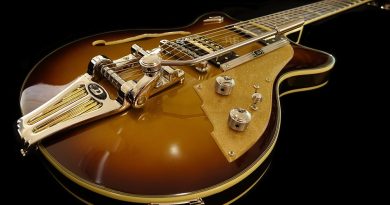Demystifying Guitar Hardware: A Beginner’s Guide to Understanding the Basics
Demystifying Guitar Hardware: A Beginner’s Guide to Understanding the Basics
As a beginner guitarist, it can be overwhelming to navigate the world of guitar hardware. With so many different types of guitars, strings, pickups, and other hardware components, it’s easy to feel lost. In this guide, we will break down the basics of guitar hardware and help you understand the essential components that make up your instrument.
1. Types of Guitars
The first step in understanding guitar hardware is knowing the different types of guitars that are available. The two most common types of guitars are acoustic and electric. Acoustic guitars are hollow-body instruments that produce sound through the vibration of the strings, while electric guitars use pickups to convert the string vibrations into an electric signal.
Acoustic guitars are typically made of wood, with steel or nylon strings, and have a sound hole on the body. Electric guitars, on the other hand, have solid bodies and rely on amplifiers to produce sound. Electric guitars also have pickups, which are magnets that capture the string vibrations and send them to the amplifier.
2. The Parts of a Guitar
To understand guitar hardware, it’s important to know the basic parts of a guitar. The main components of a guitar include the body, neck, fretboard, headstock, tuners, bridge, and pickups (in the case of electric guitars).
The body of the guitar is the main part of the instrument that houses the sound hole or pickups. The neck is the long piece that connects the body to the headstock, which holds the tuning pegs or tuners. The fretboard is the flat surface on the neck where you press down on the strings to play different notes. The bridge is the piece that anchors the strings to the body of the guitar.
3. Types of Pickups
Pickups are one of the most important components of an electric guitar. There are three main types of pickups: single-coil, humbucker, and P-90.
Single-coil pickups have a bright, clear sound and are commonly found on Fender guitars. They tend to have more noise and interference than other types of pickups.
Humbucker pickups have a thicker, warmer sound and are commonly found on Gibson guitars. They are known for their high output and lack of noise.
P-90 pickups are a hybrid between single-coil and humbucker pickups, offering a balance between clarity and warmth. They are commonly found on guitars like the Gibson Les Paul Junior.
4. Tuning Pegs and Bridge
Tuning pegs, also known as tuners, are located on the headstock of the guitar and are used to adjust the tension of the strings, which determines the pitch of each string. There are different types of tuning pegs, including locking tuners, which help to keep the guitar in tune for longer periods of time.
The bridge of the guitar is located on the body and anchors the strings in place. There are different types of bridges, including fixed bridges, tremolo bridges, and floating bridges. Each type of bridge offers different features and benefits, so it’s important to choose the right one for your playing style.
5. Strings and String Gauge
The strings of a guitar are one of the most important components of the instrument. There are different types of strings, including steel, nylon, and nickel-wound. Steel strings are common on acoustic and electric guitars, while nylon strings are used on classical guitars.
String gauge refers to the thickness of the strings. Lighter gauge strings are easier to bend and press down on, making them ideal for beginners. Heavier gauge strings offer more volume and sustain, but can be harder to play.
In conclusion, understanding guitar hardware is essential for any beginner guitarist. By familiarizing yourself with the different types of guitars, pickups, tuning pegs, bridges, and strings, you can make informed decisions about the hardware that best suits your playing style. With this knowledge, you can confidently explore the world of guitar hardware and enhance your playing experience.






